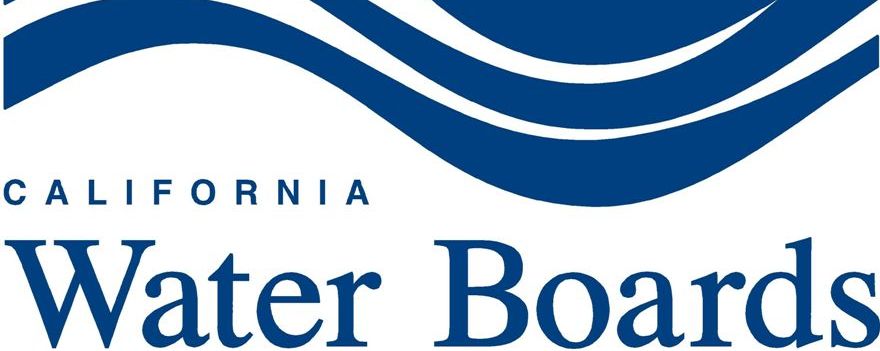From the State Water Resources Control Board:
With California’s extreme drought resulting in insufficient water to serve all water-right holders, the State Water Resources Control Board (State Water Board) announced today that junior water-right holders in the Sacramento River watershed and Delta are receiving curtailment notices. The notices advise the recipients to stop diversions of water and allow it to flow to more senior water-right holders, as required by state law.
California water rights law is based on seniority. In dry years, when there isn’t enough water in the system to serve all water-right holders, those with more junior water rights may be required to stop diverting water from rivers and streams before restrictions are imposed on more senior water-right holders. Approximately 5,740 junior water-rights in the Sacramento River watershed and Delta held by 2,772 individuals and entities will receive curtailment notices.
Curtailment notices were mailed out last week to 1,611 junior water right holders in the San Joaquin River and Scott River watersheds.
Most of the water rights being curtailed in the Sacramento River watershed and Delta are for agricultural use. A total of 4,421 (77 percent) of the water rights receiving the curtailment notices in the Sacramento watershed and Delta list agricultural uses as either the only or one of the uses for the water. Agricultural uses — such as irrigation, stockpond or livestock watering — are listed as the sole water use for 3,018 (53 percent) of the water rights.
This marks the second consecutive year that junior water-right holders on the Sacramento River Watershed and Delta have been curtailed. In the pre-drought years, these water-right holders reported average diversions of five million acre feet from June through September. Last year, due to insufficient flows, these water-right holders were prohibited from diverting any surface water during that same period. Hundreds of thousands of acres of farmland were fallowed and thousands of farmworkers lost their jobs last year due to the drought.
Water-right holders under a curtailment notice can still access water previously stored for them in reservoirs. If that’s not available, they will have to find another source of water, such as groundwater or purchased water, or stop using water. Water right holders are cautioned that groundwater resources are significantly depleted in some areas. Violations of curtailment notices are subject to fines up to $1,000 per day and $2,500 per acre-foot of water, cease and desist orders or prosecution in court.
The Governor’s Drought Executive Order mandates that the State Water Board adopt and implement emergency regulations that among other things require the curtailment of diversions when water is not available under the diverter’s priority of right.
Under the state’s water-rights system of “first in time, first in right,” junior water-right holders are those with permits, licenses, registrations and certificates issued after 1914 by the State Water Board and its predecessors, also referred to as “post-1914 appropriative rights.”
This curtailment affects water-right holders in the Sacramento River watershed, which covers almost 27,000 square miles and includes the Pit, Feather and American rivers, and all other portions and tributaries of the Sacramento River.
The Board’s action is based on projected demand and the most recent reservoir storage levels and inflow projections. Conditions in this and other watersheds continue to be monitored, and curtailment notices for other watersheds and for senior water right holders in some watersheds may be imminent. The State Water Board has issued two letters this year warning water-right holders that their rights may be curtailed due to the drought.
Last year, the State Water Board issued curtailment notices to more than 5,000 diverters on five watersheds statewide.
The State Water Board maintains a web page to assist water right holders in several key watersheds to plan for possible limits on water supply availability. The web page, titled “Watershed Analysis,” details projected water supply, demand and availability for the watersheds most likely to face restrictions during the drought as demand outstrips available water supply.
A Curtailment Fact Sheet provides additional details on the curtailment process. Please visit our curtailment notification website to see what watersheds have received curtailment letters.
Information on the drought is available at the State Water Board’s drought web site.
For more than two years, California has been dealing with the effects of drought. To learn about all the actions the state has taken to manage our water system and cope with the impacts of the drought, visit Drought.CA.Gov.
Every Californian should take steps to conserve water. Find out how at SaveOurWater.com.
How the Curtailment Process Works
Below is a graph of projected water supply and water demand on the Sacramento River, and how it affects water right holders:
To identify the need for curtailments in critical watersheds, the State Water Board uses monthly diversion data from water right holders and sorts that data by watershed, water right type and priority dates. The demands for each type of right and priority are summed and plotted graphically with demands from the next junior rights added to previous senior demands. Monthly natural flow water supply data from the Department of Water Resources or other governmental agencies are plotted on the same graph to create a Supply vs. Demand Curve as shown above. As supplies decrease below the demand curves for each priority of right, a decision for curtailment is made. If supplies continue to decline, more senior rights are subject to curtailment. As supply increases in the fall or winter, the State Water Board lifts the curtailment as soon as appropriate using same procedure.
——————————————–
Get the Notebook blog by email and you’ll always be one of the first to know!
- Sign up for daily emails and get all the Notebook’s aggregated and original water news content delivered to your email box by 9AM. Breaking news alerts like this one, too. Sign me up!
 Maven’s Notebook
Maven’s Notebook
constantly watching over the world of California water



